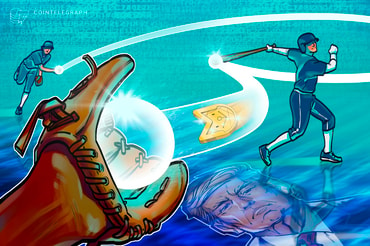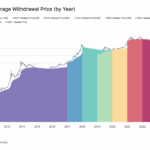NEAR Blockchain Gets Major Upgrade to Add ‘Stateless Validation’

NEAR Protocol has deployed a major upgrade known as “Nightshade 2.0” on its main network, designed to improve the scalability and usability of the blockchain.
New features include “stateless validation,” a concept that Ethereum co-founder Vitalik Buterin has written about extensively, according to a press release from the NEAR Foundation, which supports the blockchain.
NEAR ranks as just the 25th biggest blockchain by the website DeFILlama, but the project tends to be closely watched in crypto tech circles partly because of the credentials of its founder, Illia Polosukhin, who earlier in his career was a top engineer at Google working on AI systems.
The upgrade is part of NEAR’s efforts to incorporate “sharding” in its core design – splitting the blockchain up into smaller pieces which is supposed to scale the network, allowing the network to process more transactions for cheaper. Ethereum has its own roadmap for achieving full sharding, and recently implemented the feature of proto-danksharding, the first iteration of this concept.
“NEAR validators no longer have to maintain the state of a shard locally and can retrieve all the information they need to validate state changes, or ‘state witnesses,’ from the network,” according to the press release. “This both improves single-shard performance as well as adds capacity for more shards on the network.”
Nightshade has been on the NEAR roadmap for years, with the first version introduced in 2022. NEAR co-founder Illia Polosukhin published a white paper about the original Nightshade in 2019.
“Nightshade 2.0 is a fundamental reworking of NEAR sharding and is a major milestone in NEAR’s development roadmap that will greatly increase NEAR’s efficiency and scalability,” said Bowen Wang, the head of protocol at NEAR, in the press release.
“In particular, the new sharding implementation will speed up NEAR’s already-fast transaction throughput by five times. It also substantially lowers the cost of operating validators, lowering the barrier to entry for more people to become validators, which will improve the decentralization of the network.”
Read more: Near Blockchain Moves Ahead With Phase One of Sharding Upgrade
Disclosure
Please note that our privacy policy, terms of use, cookies, and do not sell my personal information has been updated.CoinDesk is an award-winning media outlet that covers the cryptocurrency industry. Its journalists abide by a strict set of editorial policies. In November 2023, CoinDesk was acquired by the Bullish group, owner of Bullish, a regulated, digital assets exchange. The Bullish group is majority-owned by Block.one; both companies have interests in a variety of blockchain and digital asset businesses and significant holdings of digital assets, including bitcoin. CoinDesk operates as an independent subsidiary with an editorial committee to protect journalistic independence. CoinDesk employees, including journalists, may receive options in the Bullish group as part of their compensation.
Margaux Nijkerk reports on the Ethereum protocol and L2s. A graduate of Johns Hopkins and Emory universities, she has a masters in International Affairs & Economics. She holds a small amount of ETH and other altcoins.

Published on Other News Site


















